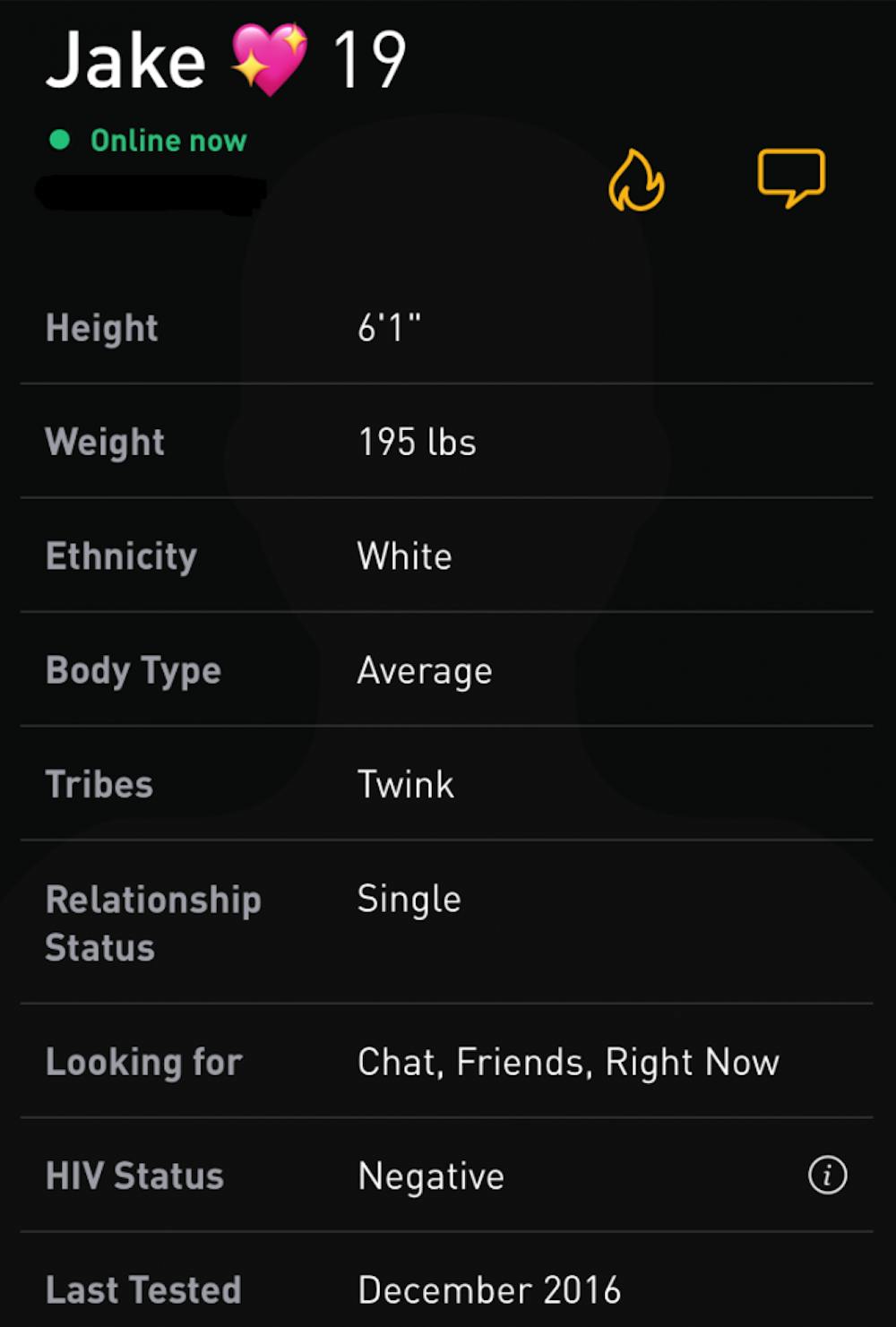Jake. Eighteen years old, six feet and one inch, 195 pounds. Average body type. White. Single. Twink. I’m looking for Chat, Friends or Right Now. HIV-negative, last tested December 2016.
That’s what guys who found me on Grindr would have read about me before I finally deleted my account this summer. Believe me, that was a long time coming.
Grindr is an app, sometimes referred to as a Tinder for gay men, which essentially provides a platform through which gay men can connect with one another. A fundamental difference between Grindr and Tinder, however, is that Grindr is almost exclusively designed for hookups.
Hookup culture may be present on college campuses, but it runs rampant within the LGBTQ community, particularly among gay men. Grindr facilitates a lot of that, with a streamlined process built around different labels that allow users to filter through different profiles based on what they’re looking for.
In the LGBTQ community, hooking up also has a more complicated history and is deeply rooted in (surprise) the general homophobia and oppression queer Americans experienced during the late 20th century.
During that time, gay men were typically unable to express romantic attraction openly and were instead forced to connect to one another through hookups that were almost always sexual in nature. This in part led to the largely harmful perception that gay men are hypersexual and also normalized the fetishization of gay sex, typically for straight women.
This might be a good place to add that I’m writing this as a gay man. I’m writing about the experiences of gay men, and I don’t want to speak on how other queer groups fit into this absurd hookup system, because I haven’t lived those experiences.
But as a gay man, I’ve had plenty of experience with Grindr. For the most part, Grindr caters to cisgender gay men, and in a perfect world, it would be a place where gay guys could all be happy and friendly and gay together.
In reality, Grindr shatters this blissful gay utopia with a system of labels that are, at best, anxiety-inducing and, at worst, enforcing historically harmful stereotypes about gay men and wider perceptions of the LGBTQ community.
Grindr operates on a system of labels that force users to define themselves and their sexuality in a few words. Something as basic as body type (mine is “average”) already reflects the general lack of body positivity in the gay community. Users can sort through guys to find only those with “slim” or “muscular” bodies, excluding anyone whose body type is deemed less acceptable by society.
Then, of course, users select their “tribe” (for the purposes of this article, I’m not even going to start on the problematic use of that term). But the “tribes” on Grindr allow for the further divisions of the gay community, which are still often based on body type, but now they include masculinity or femininity.
For example, a “twink” (the label I usually use, though I’m not sure how strongly I identify with it) is typically a younger gay guy with more feminine attributes. Body type comes into play here, because if you fit that description but have a bigger build, you may be a “cub.” Users with that label (inevitably tied to their weight) might typically be more masculine.
“Cub” also bears negative implications on age, as “cubs” are generally considered young. “Bears” refers to an older, more masculine and usually bigger guy. And there are more — “daddy,” “jock” or “leather.” I can’t decide which is a more problematic “tribe”: “poz” (referring to an HIV-positive status) or “trans” (forcing all transgender guys on the app to label themselves).
These are a few of the labels on Grindr, but it’s not as if there’s a label for every type of guy on the app. Instead, most users are left struggling to figure out exactly how to identify themselves.
Grindr’s labels are a double-edged sword. They leave many users unsure on how to label themselves, and they also allow others to filter through the app based on body type, “tribe,” age or even race.
Please let that sink in.

A Grindr user can search exclusively for 18-year-old white twinks with slim body types.
To Grindr’s credit, this year they added a section in which users can identify their HIV status as something other than a “tribe” and have made a greater effort to connect users with sexual health resources and encourage safe sex practices.
Still, didn’t remove that “poz tribe” though, did they?
There is a laundry list of different prejudices that Grindr’s system reinforces in expecting users to label themselves and then allowing others to sort through those labels: racism, transphobia, fatphobia, stigma against those living with HIV, negative expectations of masculinity and femininity in gay men, unhealthy dynamics between younger and older gay men.
Did Grindr create these problems?
Of course not.
But its focus on using these labels to identify users is not helping us eradicate these problems from the gay community.
I condemn the app not because I disapprove of hookup culture, but because Grindr perpetuates detrimental and dangerous prejudices that plague our community.





